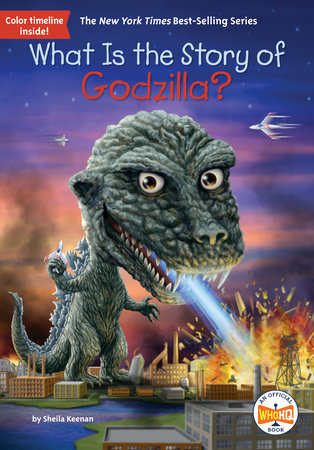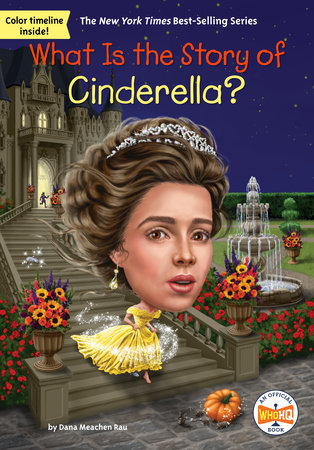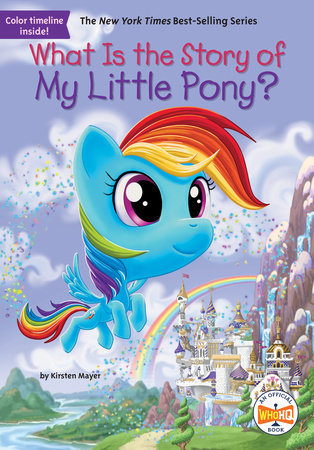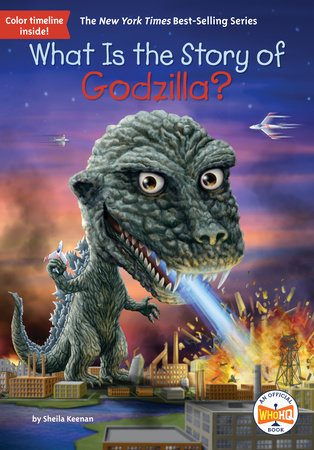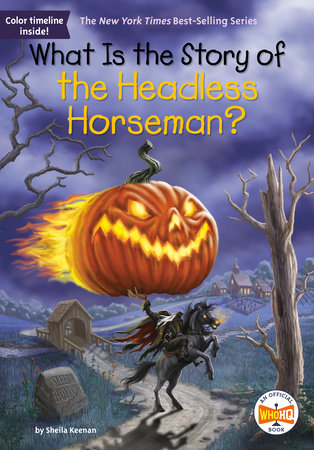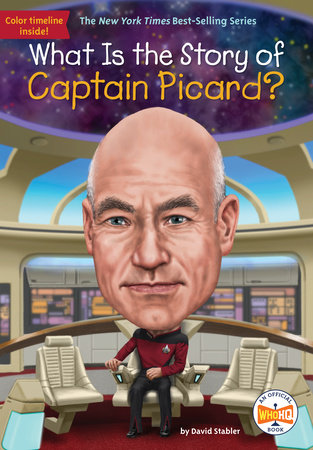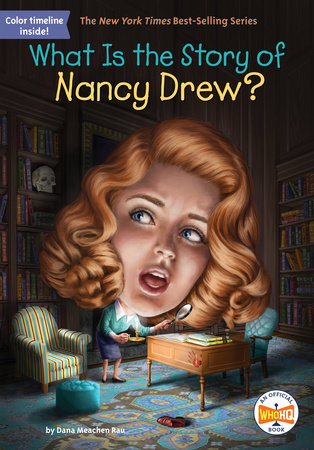Excerpt
What Is the Story of Godzilla?
What Is the Story of Godzilla?
On October 10, 2020, government officials and other notable people stood on a red platform decorated with ribbon in Nijigen no Mori (say: NEE-jee-gen no MO-ree) Park on Awaji Island, Japan. After a few short speeches, smoke suddenly billowed out from several cannons. A deafening roar filled the air. The officials cut the ribbon. Behind them a few brave people whooshed by on a zip line headed directly into the gaping, jagged-toothed mouth of an enormous monster, 180 feet long and 75 feet high. Its giant eyes glared and its inner belly glowed.
The world’s first Godzilla theme park attraction was now open!
Officially named “Godzilla Interception Operation Awaji,” it celebrates one of the most famous monsters in the world.
The beast first came to life in 1954 in a movie created, directed, and produced in Japan. Since then, it has appeared in dozens of movies and other media.
The monster is known to millions for its thundering footsteps, frightening cry, and blazing heat-ray breath. Audiences fear or cheer Godzilla, because sometimes the supersize prehistoric beast is the enemy of humankind, and sometimes it is its friend. Either way, there’s a lot of action and foot-stomping demolition involved. Godzilla has tromped through eleven Japanese locations, especially Tokyo (twelve times!). It’s terrorized international cities such as New York, Boston, San Francisco, Honolulu, Beijing, and Hong Kong. No matter what language the people scurrying for cover are screaming, the monster uproar is global. Flattened buildings, squashed cars, smashed bridges, and upended trains: Godzilla leaves a huge footprint!
November 3 is called “Godzilla Day” because that’s the date the first film was released in 1954. In the seven decades since then, Godzilla has become a monster record-breaker. It is the longest continuously running film franchise ever.
How Godzilla became King of the Monsters is an interesting story. It involves military history, Japanese culture, film technology, and the growing popularity of science-fiction movies. And this story starts at the dawn of a new age.
Chapter 1 The Monster Awakens In 1954, when the first Godzilla movie appeared, World War II was a fresh and awful memory for many people. This widespread war had only ended nine years earlier, and the war’s end was particularly devastating in Japan.
World War II was a global battle of Germany, Italy, and Japan (the Axis Powers) versus the United Kingdom, the Soviet Union, China, and the United States (the Allies). Other countries were invaded by, or joined forces with, the Axis or Allies, too.
In May 1945, the war waged in Europe ended, but fighting continued in the Pacific. By July, the Japanese armed forces had still not surrendered to the Allies. To end the war, the United States unleashed a powerful force never seen in the history of humankind: atomic weapons. On August 6, 1945, American aircraft dropped an atom bomb on Hiroshima, Japan. Three days later, another atom bomb was detonated in Nagasaki. The death count was shocking. Both cities were reduced to toxic, smoldering ruins. Emperor Hirohito announced Japan’s surrender on August 15, 1945. World War II had ended—but the nuclear age had begun.
United States bomb testing in the Pacific Ocean in 1954 renewed people’s fears of nuclear weapons. Problems with that testing triggered a worldwide anti-nuke movement to ban them. It also inspired Tomoyuki Tanaka, a producer at Toho, a major Japanese film studio. So did a business flight he took around the same time. Tanaka looked out the window as he flew over the Pacific and wondered what might be lurking deep down in the water below.
Tanaka had seen how popular American monster movies like
King Kong (1933) and
The Beast from 20,000 Fathoms (1953) were. He believed now was the time for a Japanese film of this type. Tanaka also proposed that Toho do something groundbreaking: base a movie on a monster awakened by nuclear weapons. Given Japan’s experiences, this made sense. However, those very same horrible experiences could also make a movie like this controversial. Japanese audiences might be shocked to see atomic violence in a monster movie. People might not want to think about questions like what happens if scientific research is misused.
Toho was willing to take a chance. The company gave Tanaka the go-ahead. He assembled a team that would create the studio’s most famous movie star: Godzilla.
Chapter 2 Go, Gojira! Toho Company, Ltd. was founded in Tokyo, Japan, in 1932. Movies from this film production and distribution company involved some of the country’s major directors and stars. By 1953, Toho had an international company focused on getting its movies screened outside of Japan, especially in the Americas. Because of Toho’s reach and reputation, and his own skills, Tomoyuki Tanaka was able to hire an incredible group to make his monster movie,
Gojira.
Godzilla is the English-language name of the creature.
Gojira is its original Japanese name, which is thought to be a combination of the Japanese words
gorira (gorilla) and
kujira (whale). This makes sense since the movie features a big, powerful, fantastical animal that lives underwater. (Fans would eventually start calling their favorite monster “the Big G.”)
The story the writers created for the first Godzilla movie came right out of recent history. Gojira, an ancient deep-sea creature, is awakened by nuclear bomb testing deep in the Pacific Ocean. With its fiery heat ray, the monster that arises is a weapon in itself. And Gojira is not happy about what human beings are doing! All their dangerous testing is disturbing its environment.
The 1954
Gojira movie opens with ships and fishing boats mysteriously destroyed after blinding flashes from the ocean. Then a fishing village is hit by a storm—and something bigger! Scientists sent to the island discover giant, radioactive footprints. Suddenly a loud bell rings throughout the village. Everyone rushes for the hills and sees an enormous dinosaur-like figure submerging into the sea.
Gojira!
The action in the movie follows government and military attempts to stop Gojira’s attacks. Underwater explosives don’t seem to have any effect. Next, a tall, electrified fence is built along the coast, to protect Tokyo Bay. Gojira breaks through. It rears up to its full frightening height, opens its mouth, and shoots out a scorching heat ray. The high-wire towers of the coastal fence melt!
The Father of Monster Movies When Tomoyuki Tanaka was a child in Kashiwara, Osaka, Japan, the movie industry was also young. The first movies he ever saw were silent films. He loved them!
Tanaka worked at Toho Film Studios for almost sixty years and rose through the ranks to become Toho’s chairman. He produced more than two hundred films, including twenty--two of the studio’s Godzilla movies. He was very involved in the filmmaking, from developing story ideas to marketing the movies to international audiences. In discussing how the original Gojira movie came to be, Tanaka once told an interviewer, “I felt like doing something big.” Mission accomplished! Japanese troops and tanks can’t stop the mighty monster. Fighter planes eventually drive Gojira back into the sea. By that time Tokyo is aflame, buildings are toppled, and people are fleeing or hiding. Hospitals are filled with crying children and moaning adults. It is a frightening scene, much like recent wartime.
The main characters in the movie disagree about what to do. Japanese officials just want to wipe out the murderous monster. Paleontologist-zoologist Kyohei Yamane wants to study Gojira because the giant creature has survived powerful weapons testing. Dr. Yamane believes this research would be important and useful to the people of a nation that has experienced atomic bombings.
Meanwhile, Yamane’s fellow scientist, the moody and mysterious Daisuke Serizawa, has developed a new terrible weapon: an Oxygen Destroyer, which sucks out all the oxygen wherever it’s used. The lack of oxygen is capable of killing everything . . . including an out-of-control, 165-foot raging reptile with heat-glowing dorsal fins and fiery breath. But despite the death and destruction Gojira has caused in Tokyo, Dr. Serizawa does not want to use the Oxygen Destroyer on Gojira. He is afraid to unleash another weapon of mass destruction in the world. He fears other scientists and nations will copy his work. More Oxygen Destroyers could mean worldwide danger and disorder.
There is also a love story within this monster movie. Dr. Yamane’s daughter, Emiko, is engaged to Dr. Serizawa, but she is actually in love with someone else: Hideto Ogata, a ship captain. The young couple try to tell both Dr. Yamane and Dr. Serizawa that they want to marry. But whenever they’re about to declare their love, Gojira rises up from the ocean, plows through the Japanese military, crashes through the city streets, and sets everything on fire.
Dr. Serizawa eventually accepts that Emiko loves Hideto. Now they have to work together to convince him to use the Oxygen Destroyer. As they plead with him in his lab, Dr. Serizawa glances at a television screen. He sees news footage of all the damage and suffering Gojira has caused. A children’s choir sings a solemn prayer for help. Serizawa makes a difficult choice: He agrees to use the Oxygen Destroyer against Gojira—but he burns all his research notes so no one else will ever be able to use the deadly weapon again. Now Dr. Serizawa is the only person who knows how to build an Oxygen Destroyer. The plans for it exist solely in his head. His secret is safe as long as nobody can force him to reveal it.
In the final scenes of the movie, Dr. Yamane and Emiko watch anxiously from the crowded deck of a ship as Hideto and Dr. Serizawa dress in heavy diving suits. Then they drop into the ocean, holding the Oxygen Destroyer. The boat and divers are linked through a radio intercom.
The two men walk along the ocean floor and surprise Gojira, who seems to be napping there. The giant creature lurches toward them, clearly threatening the human intruders. Dr. Serizawa opens the Oxygen Destroyer, which starts bubbling all around the divers and Gojira. He signals to Hideto to start rising back up to the boat. With Hideto safe, Dr. Serizawa sends a last message to the boat via the radio intercom. He wishes the young couple a happy life, pulls out a knife, and slashes through his air supply tube. He is taking the secret of the Oxygen Destroyer to the grave. And that’s where Gojira is headed, too!
The monster’s end is dramatic. Gojira thrashes and struggles through a wall of bubbles. It rises up, breaks through the surf, and roars loudly one more time. Gojira keels over, sinks back down, and is blasted by the Oxygen Destroyer into a huge floating skeleton. Then even the bones disappear. The horror is over . . . for now.


